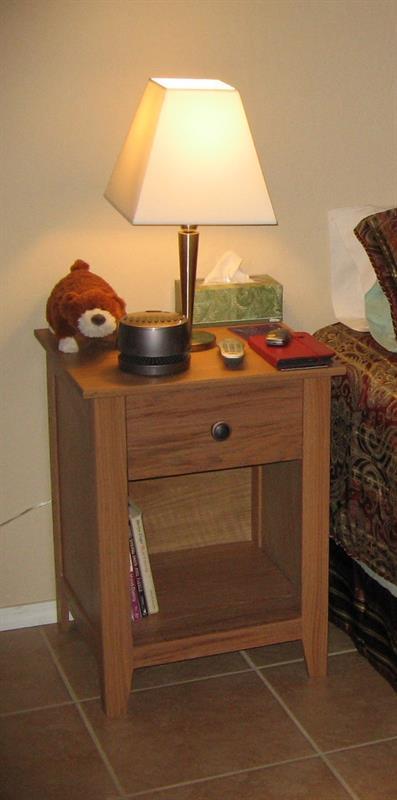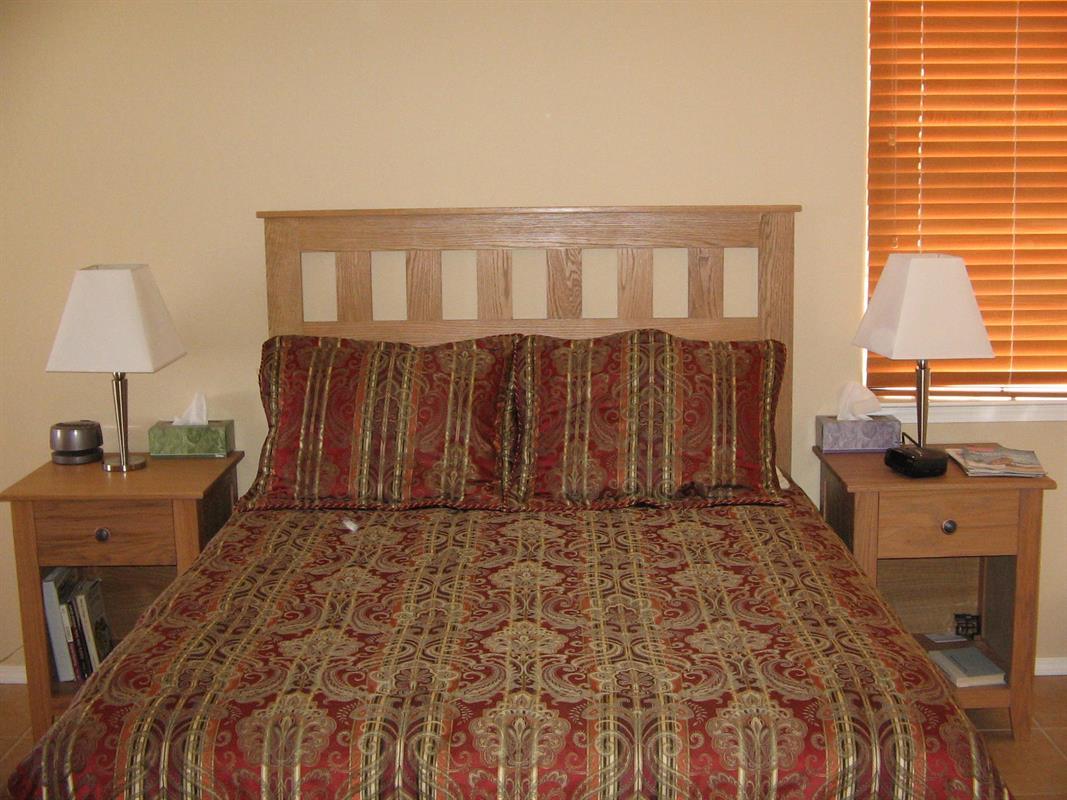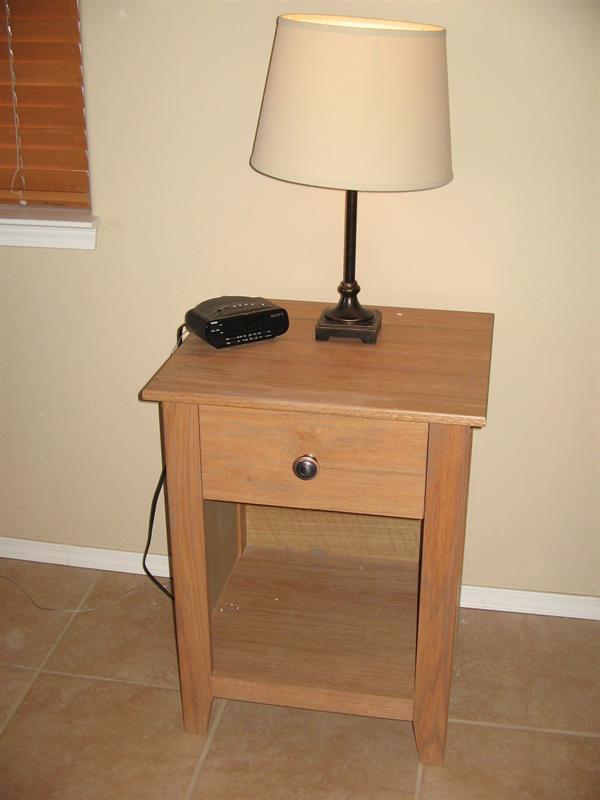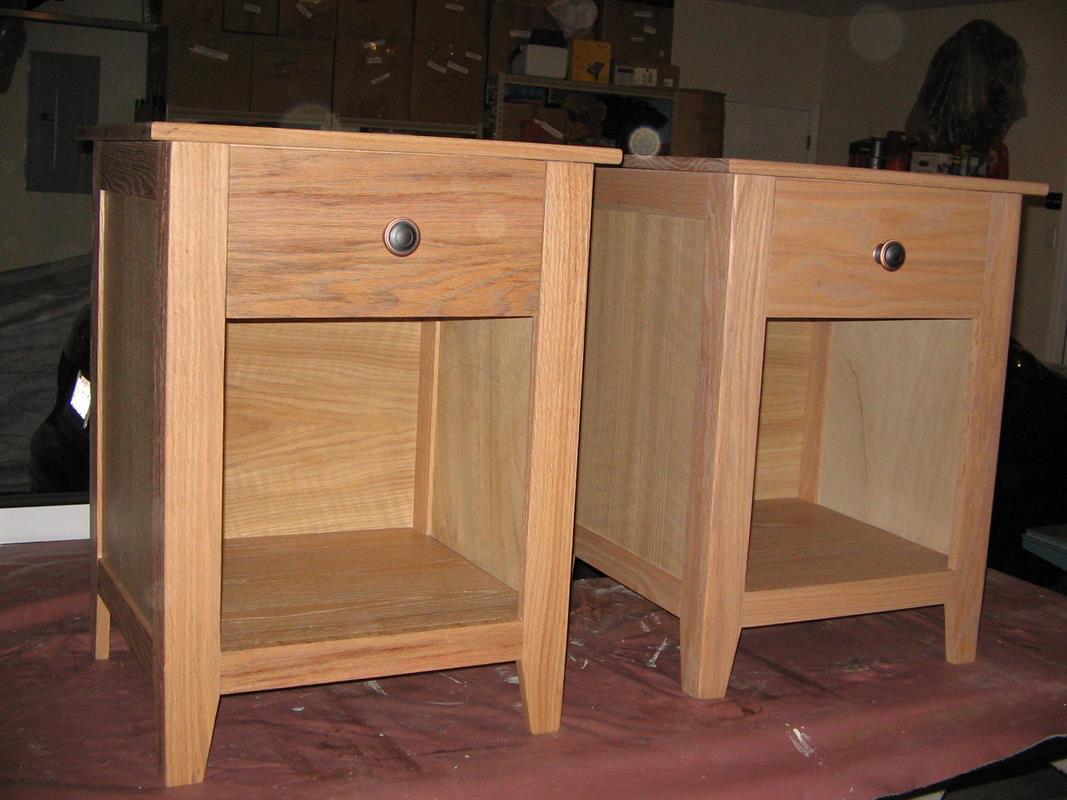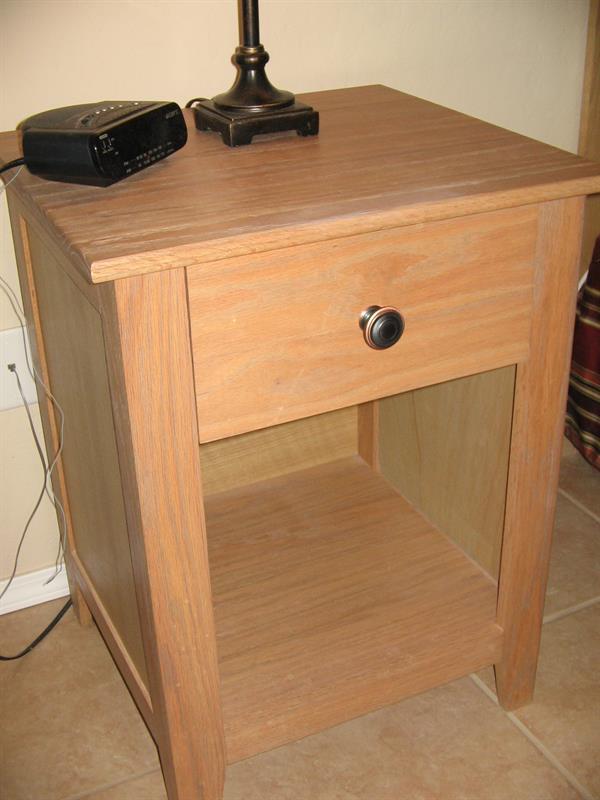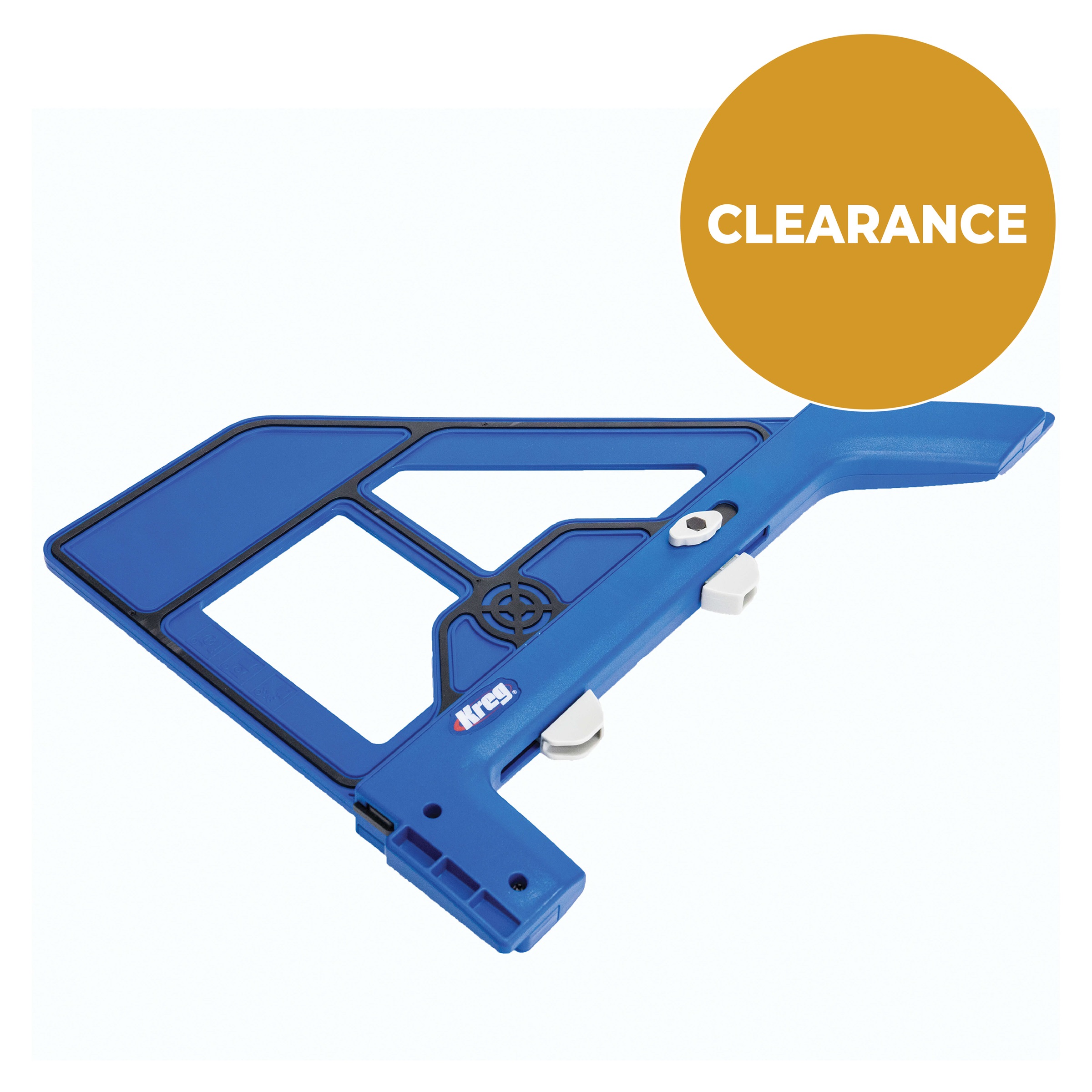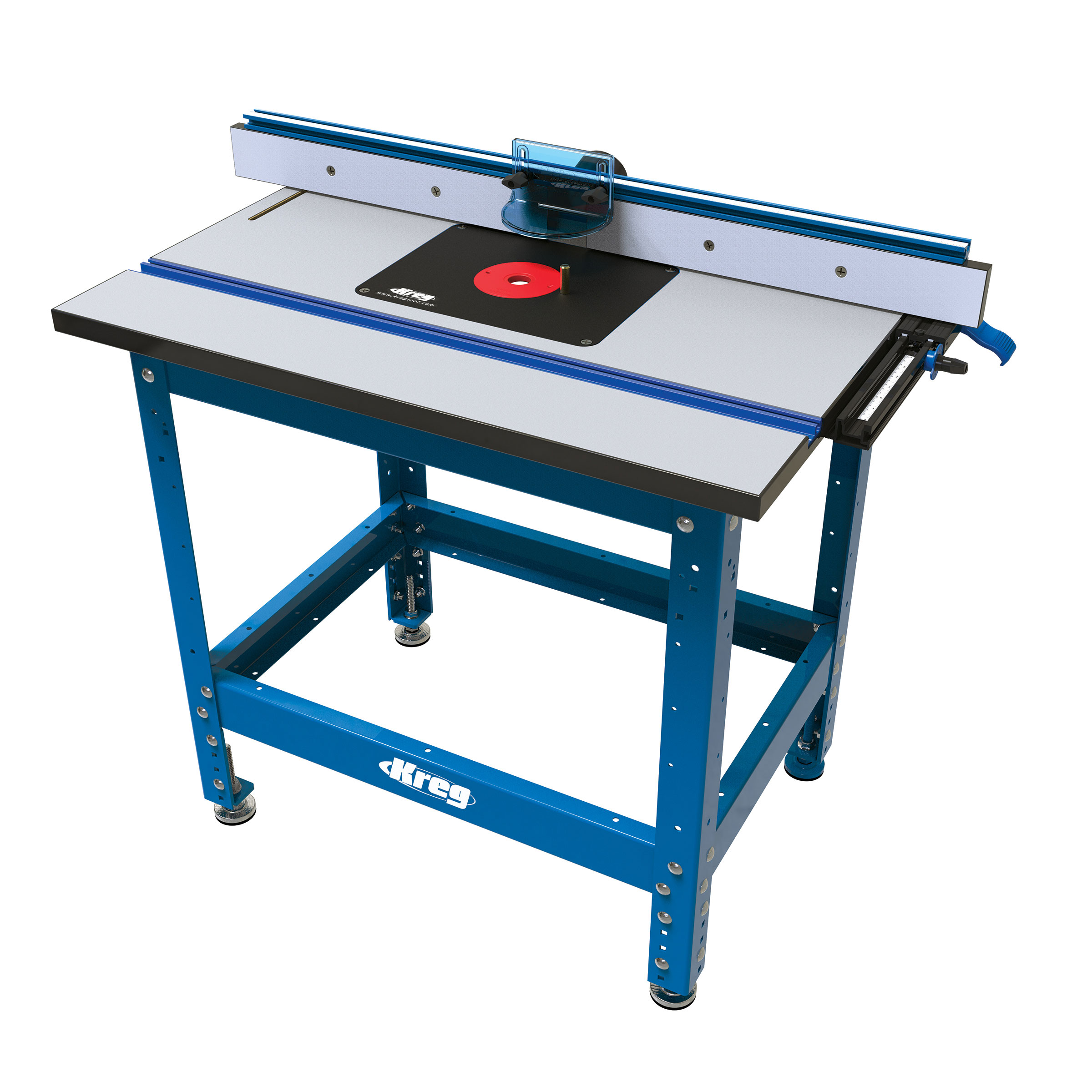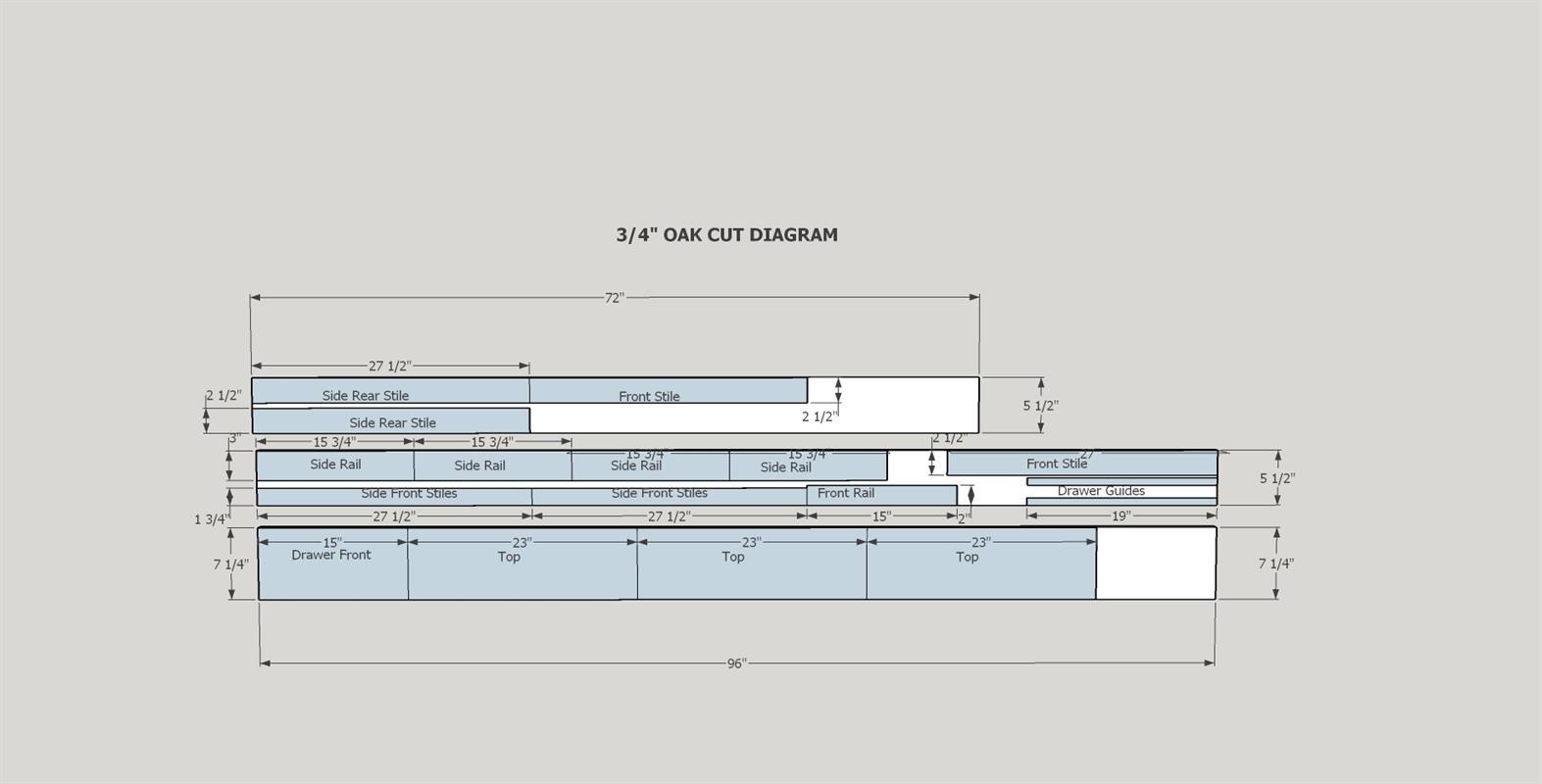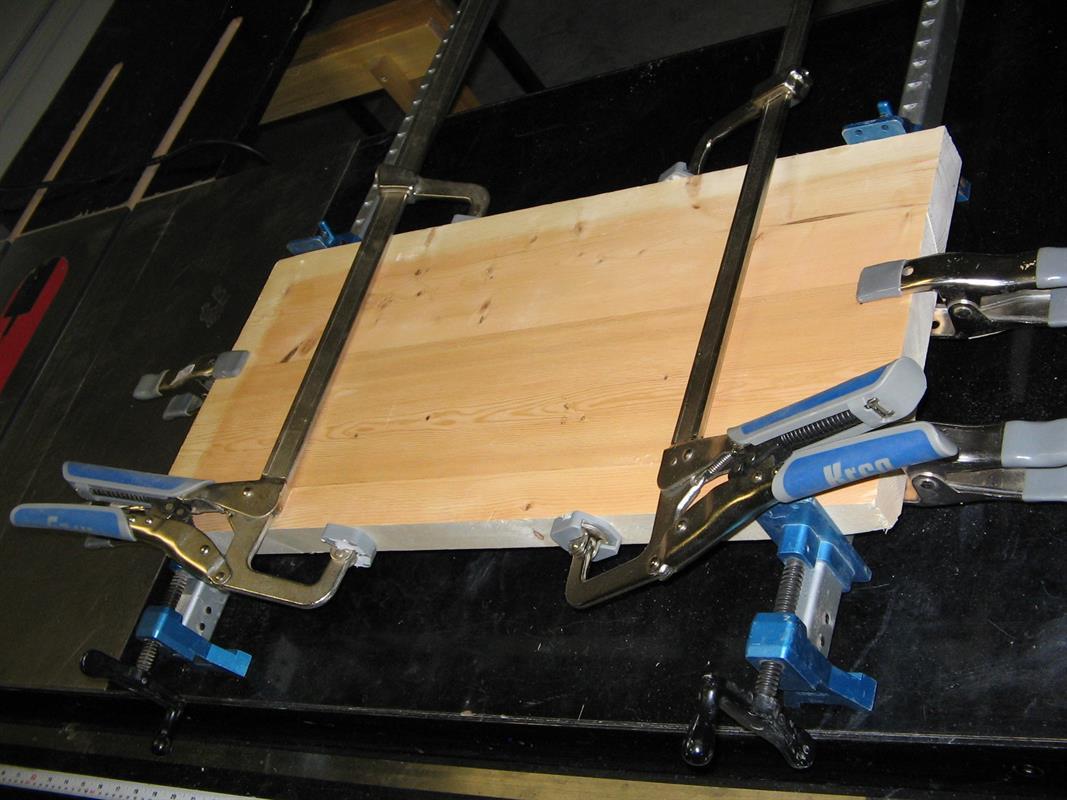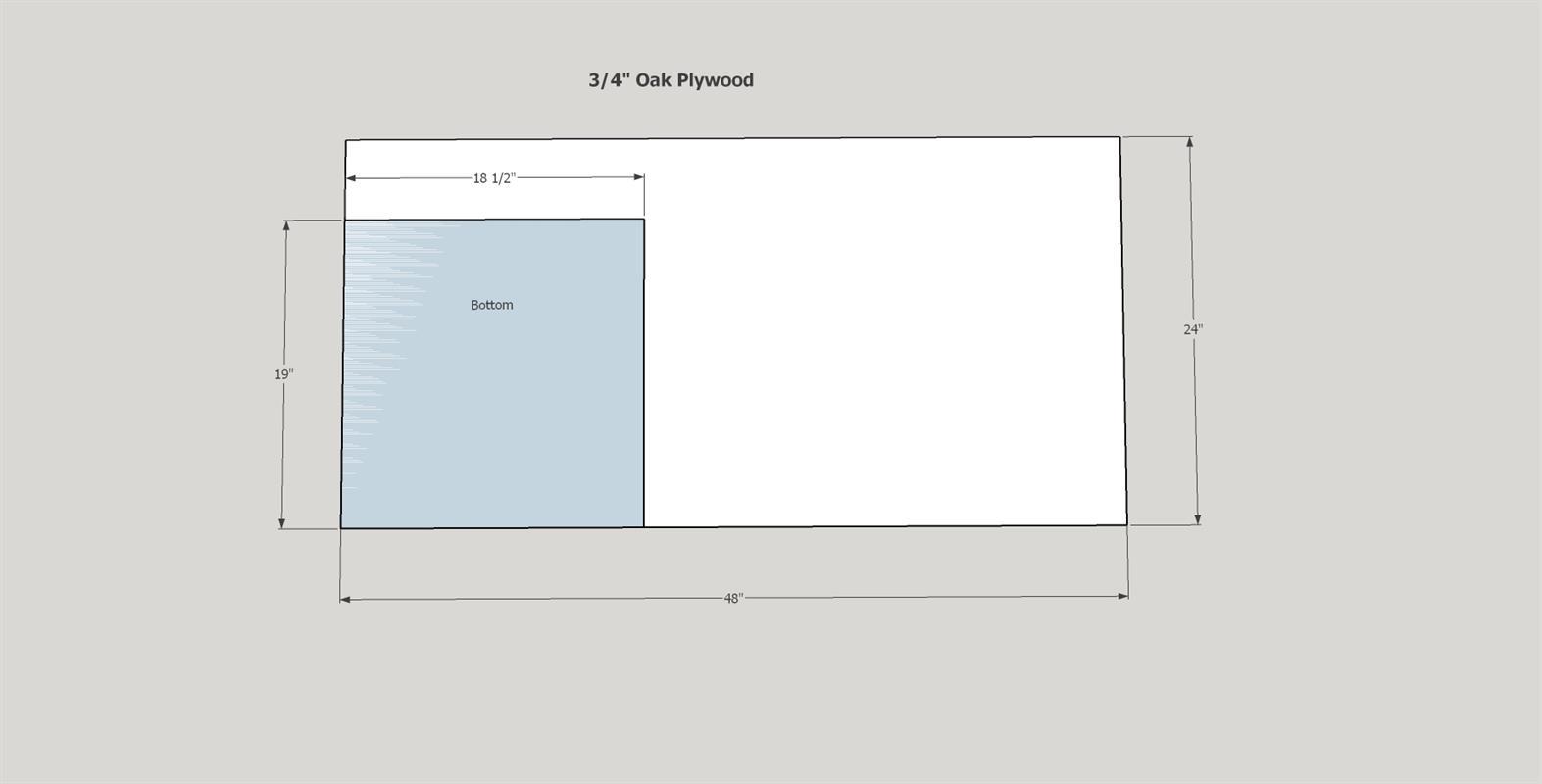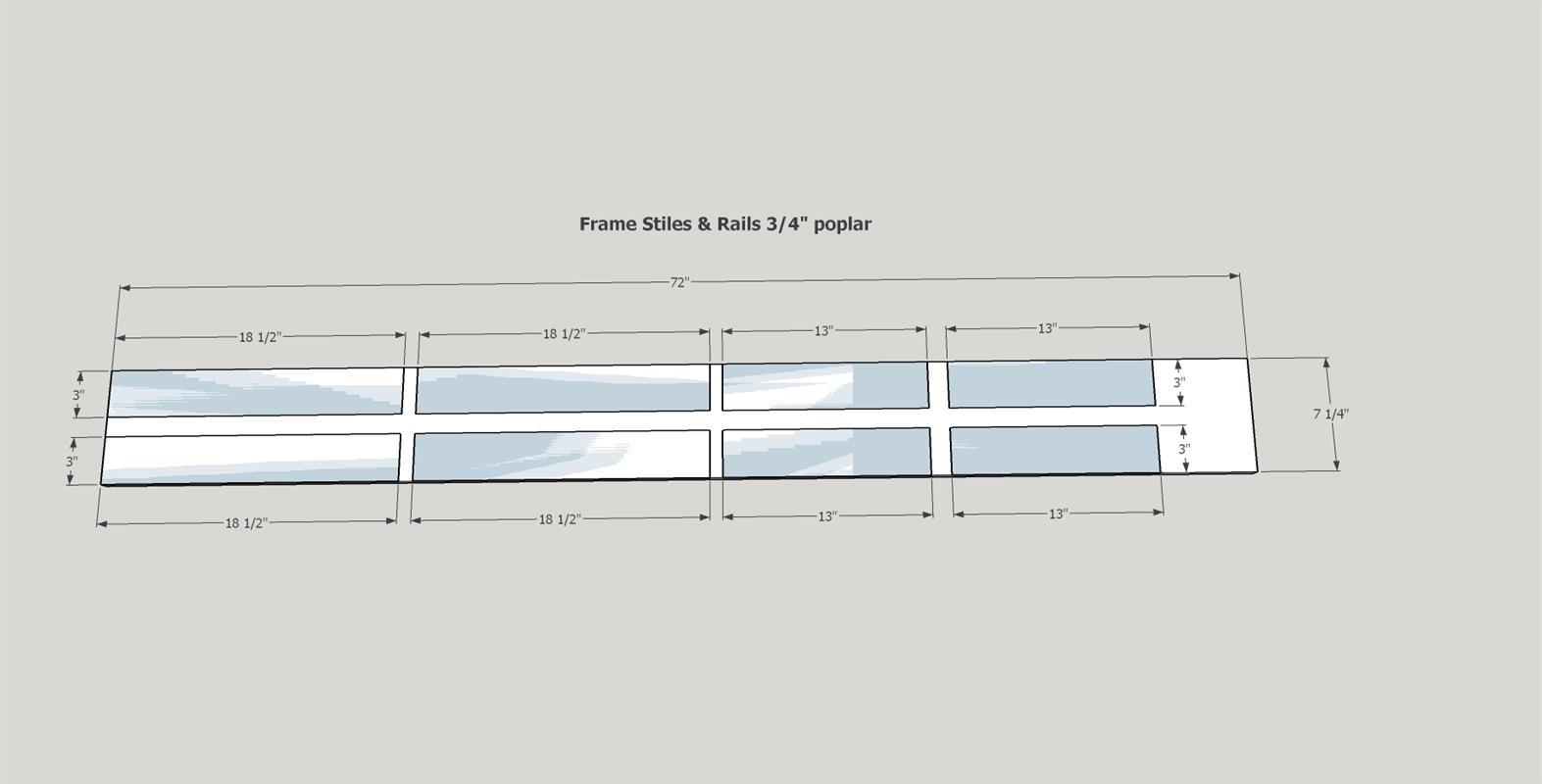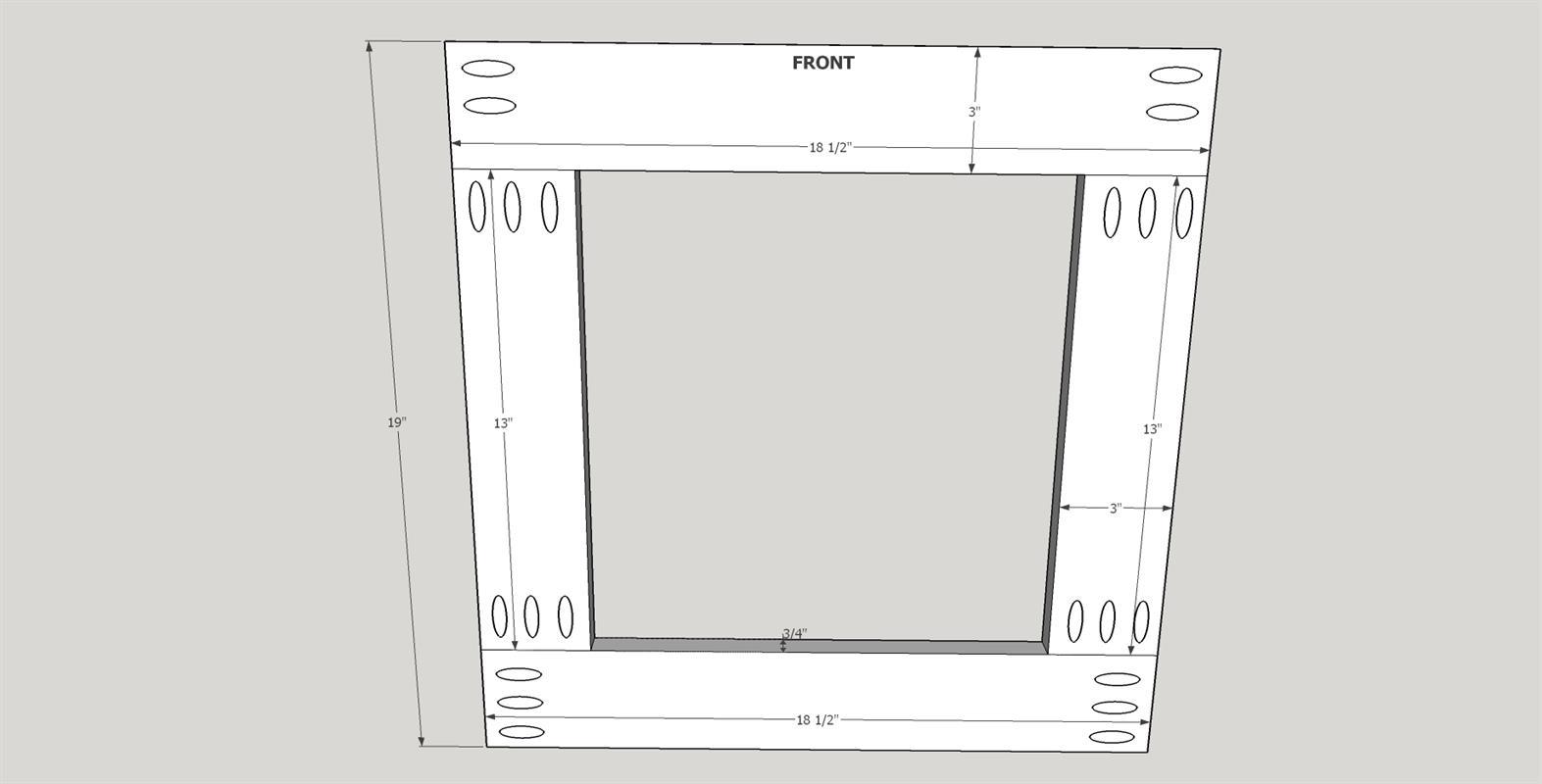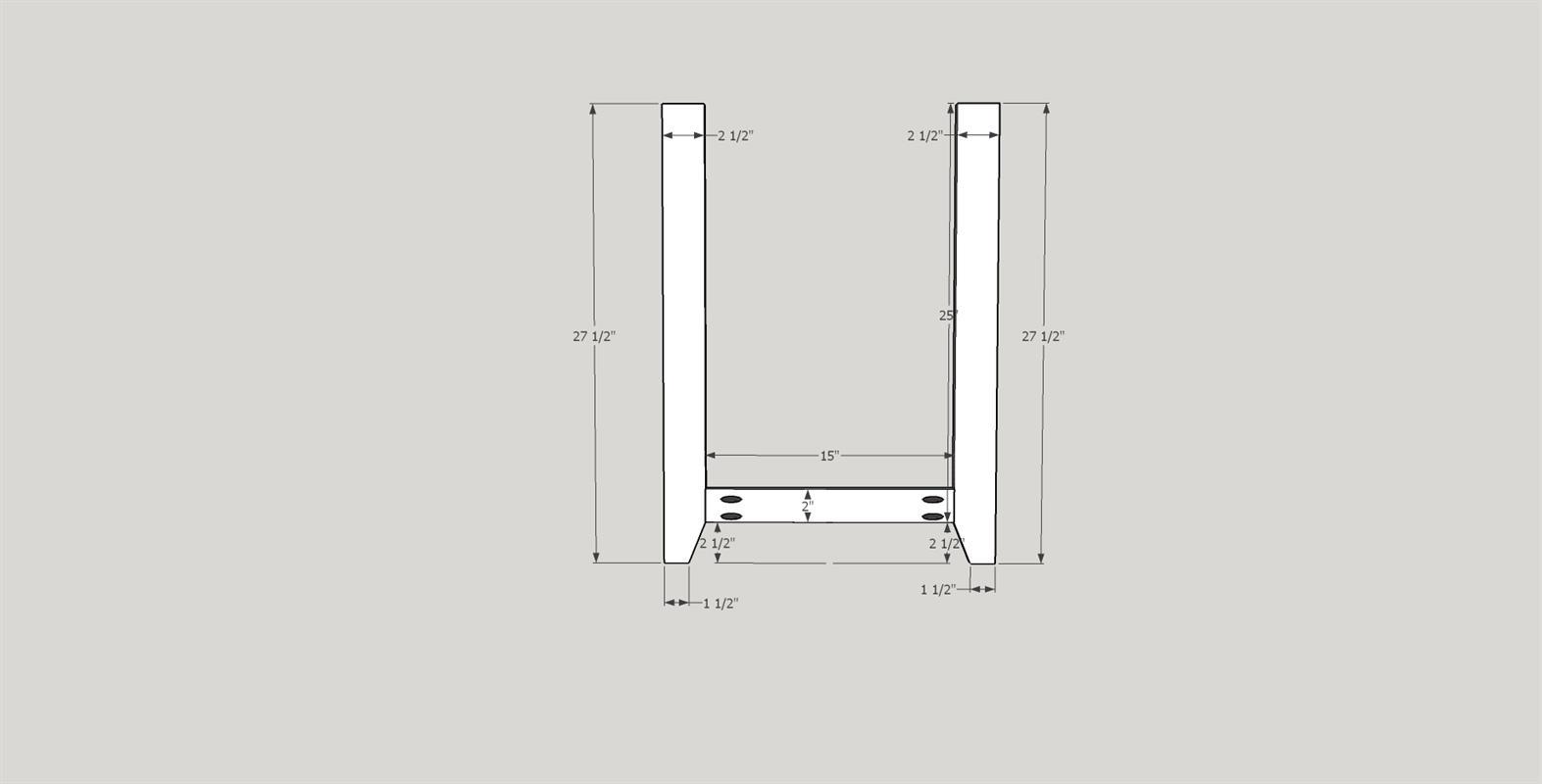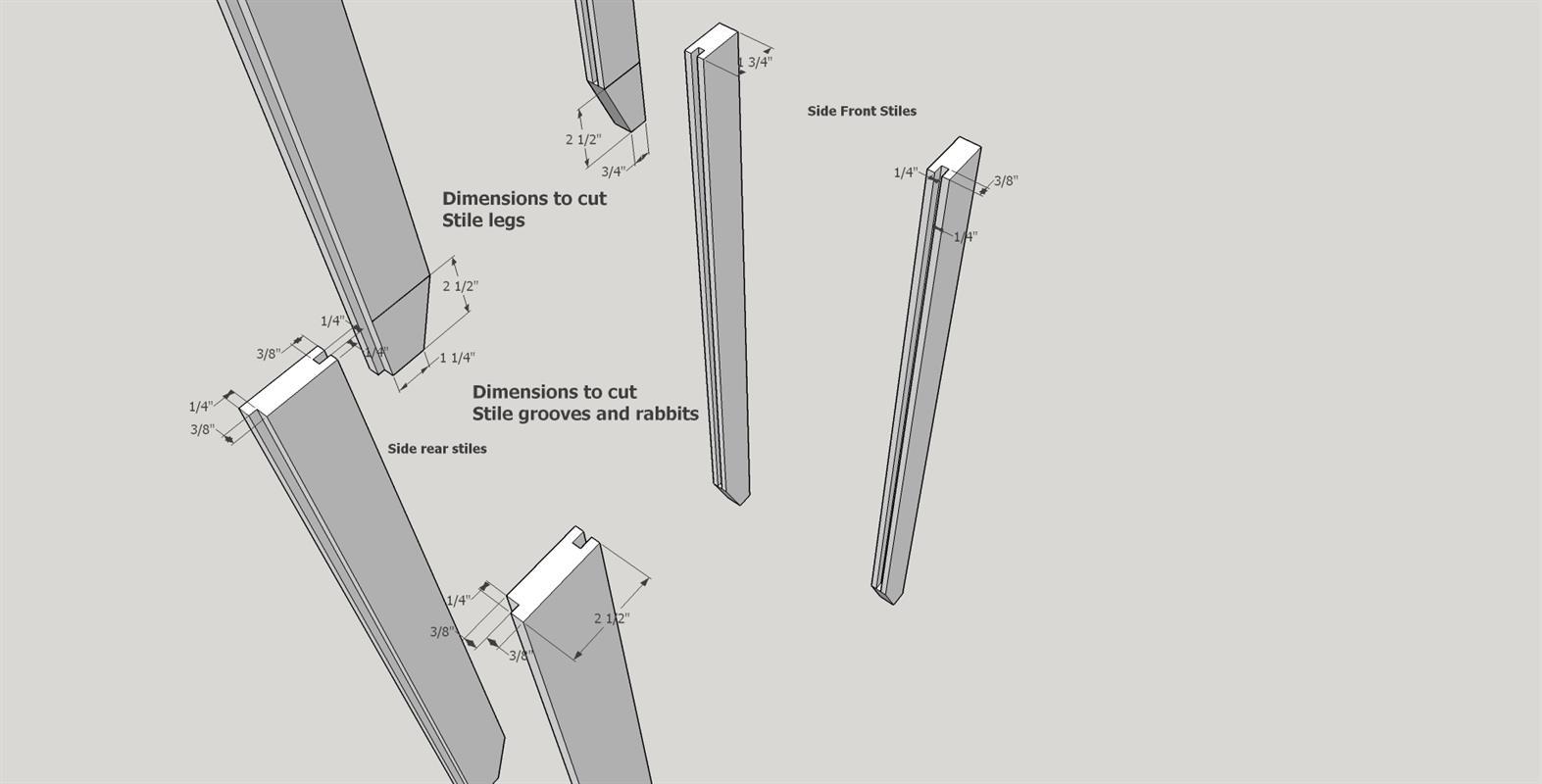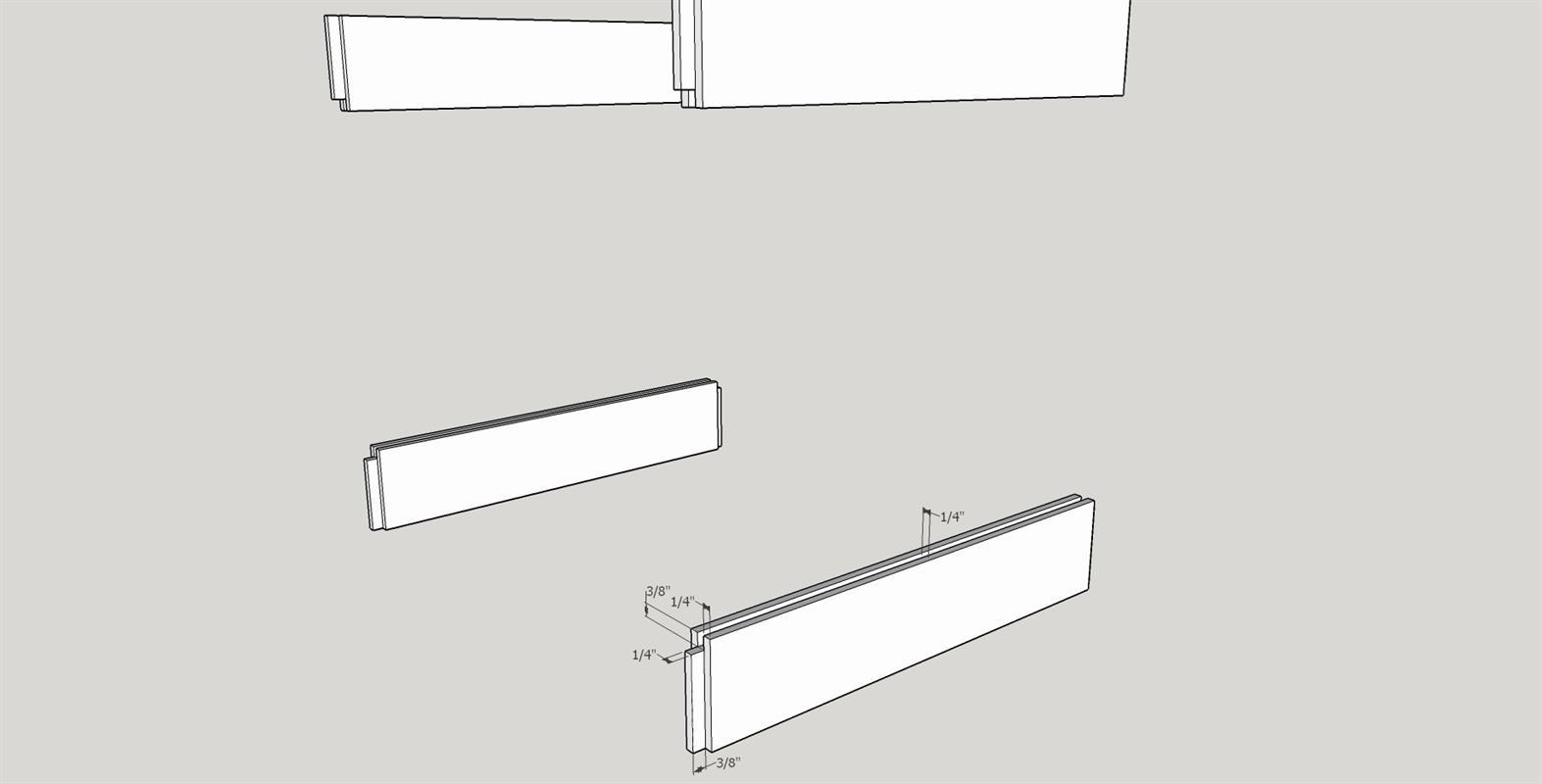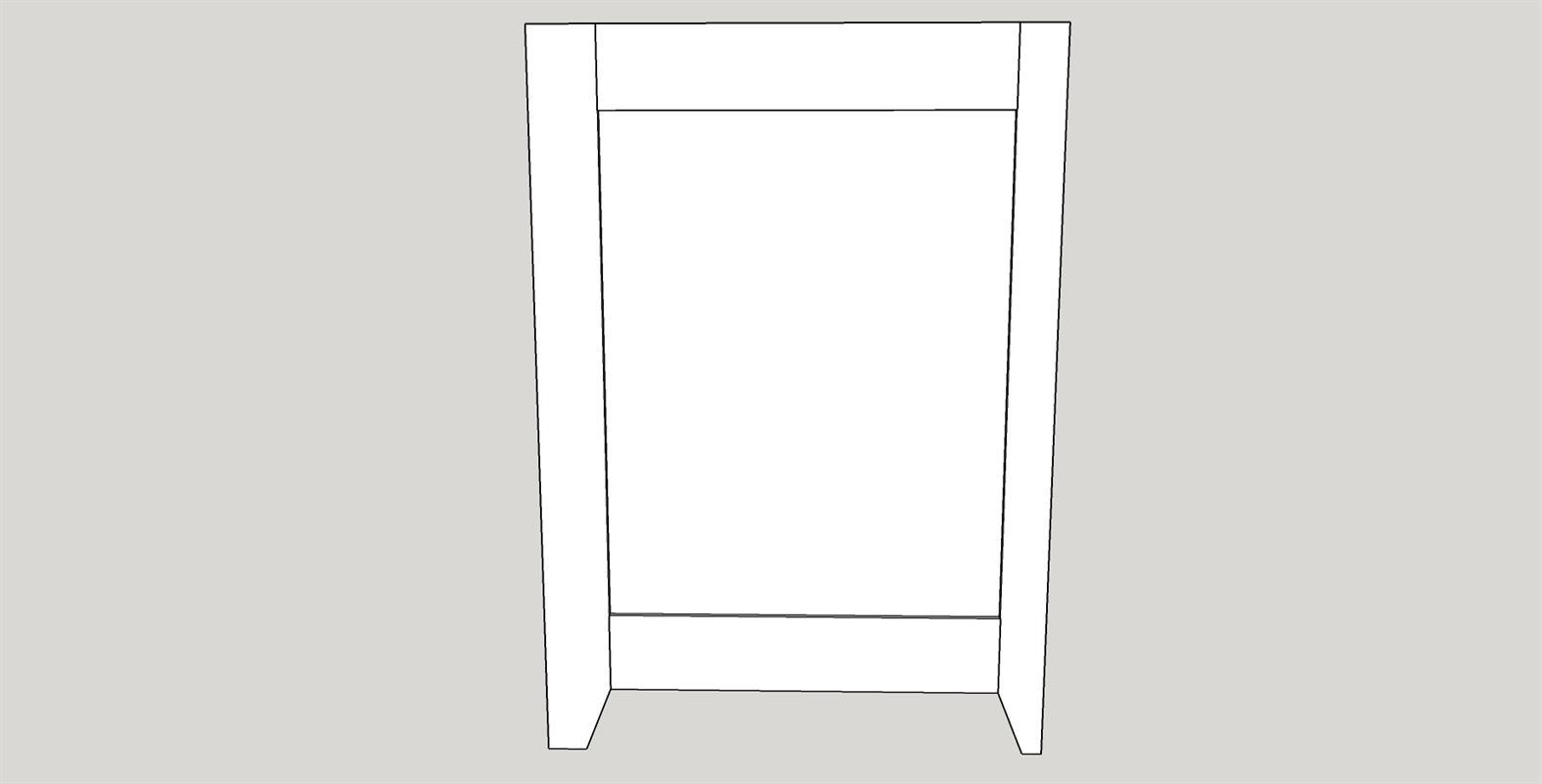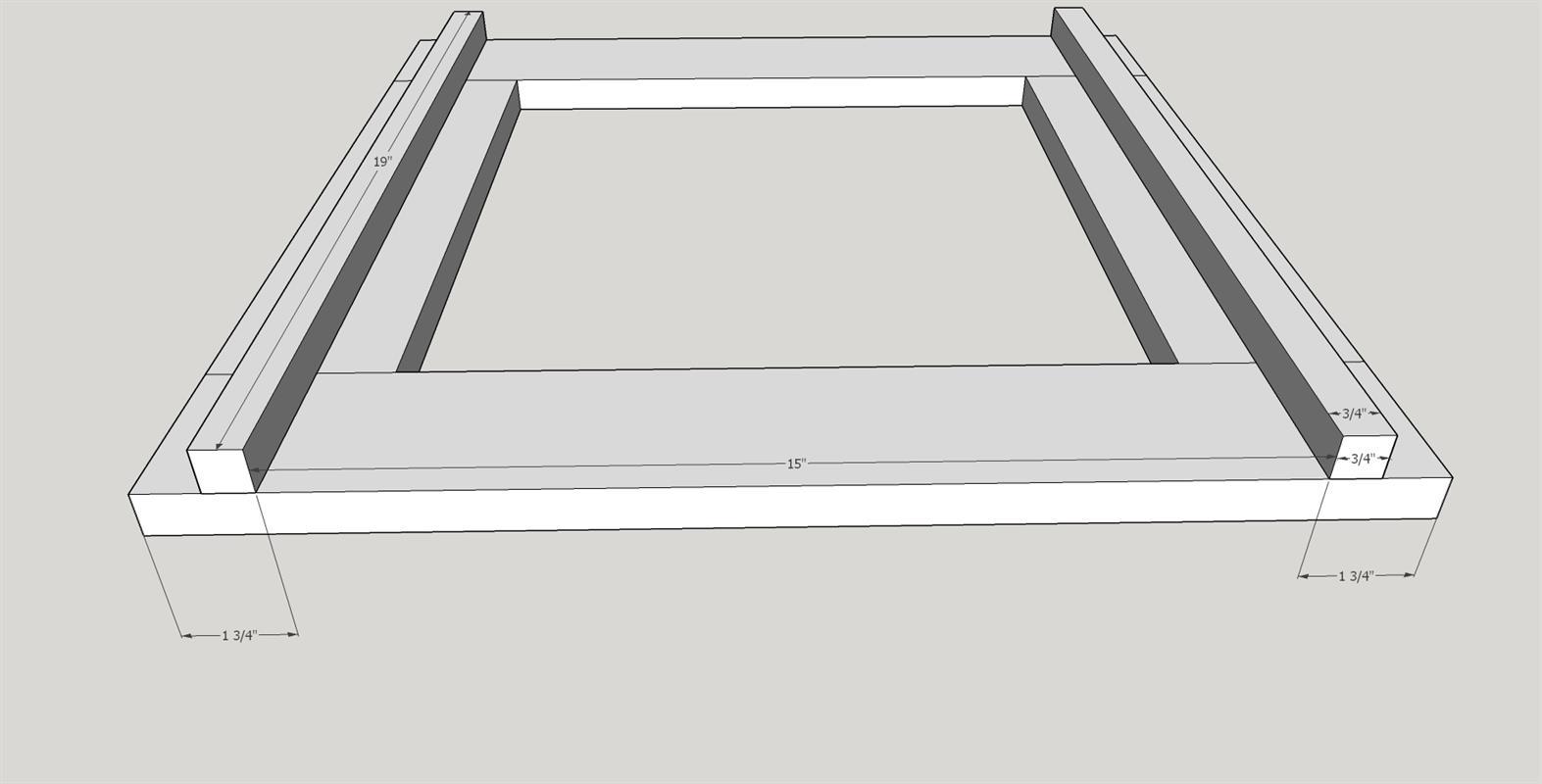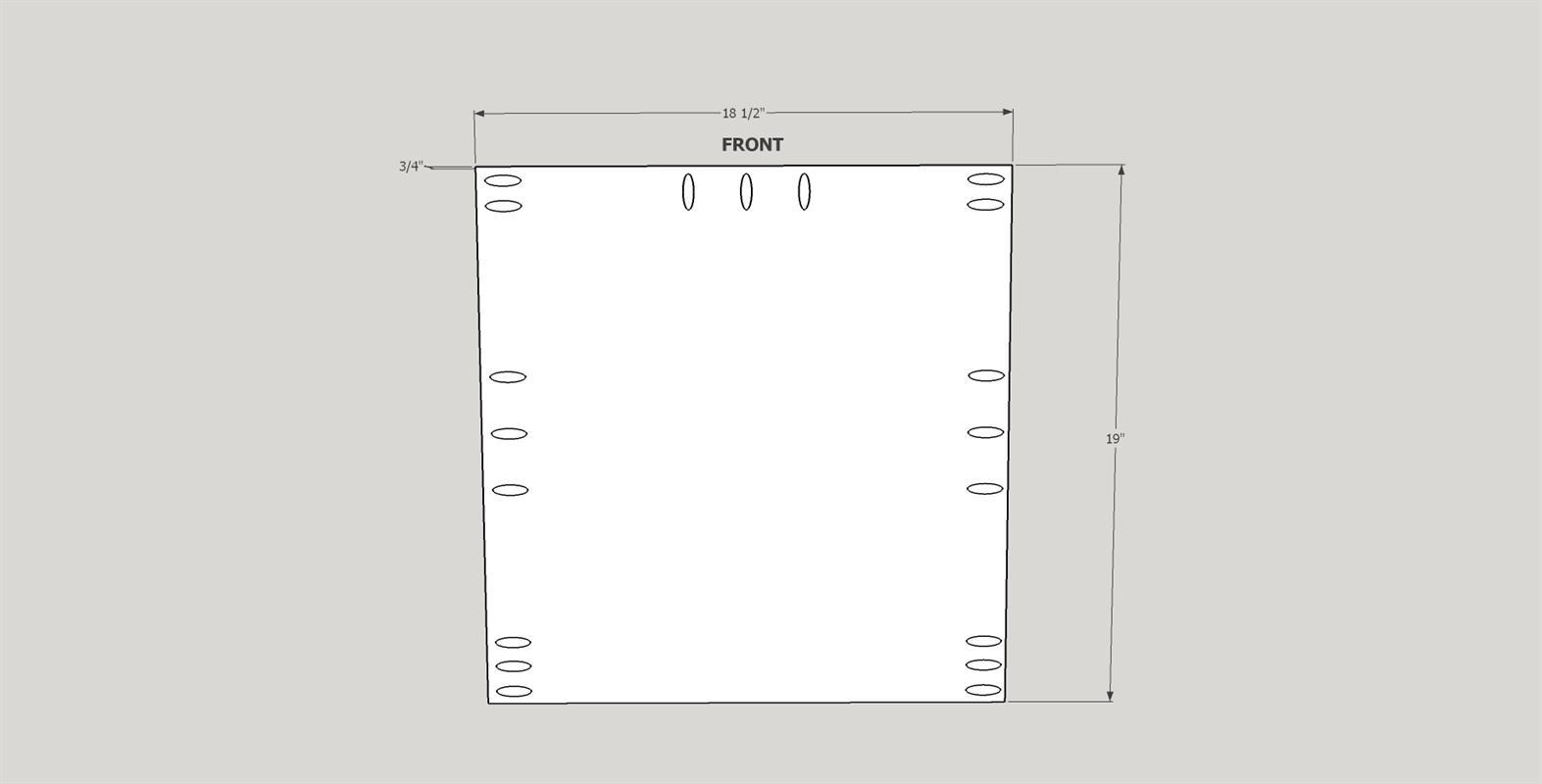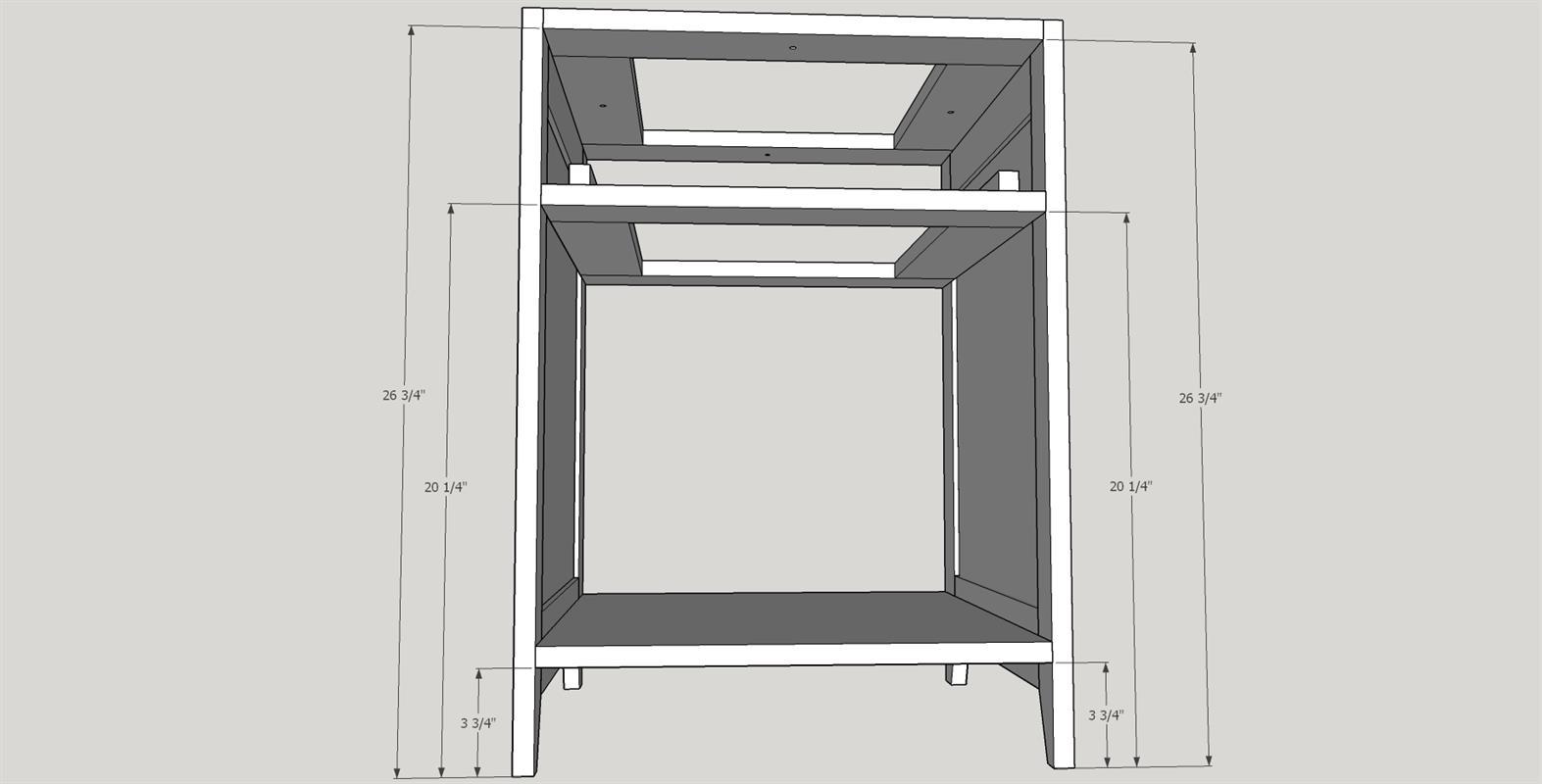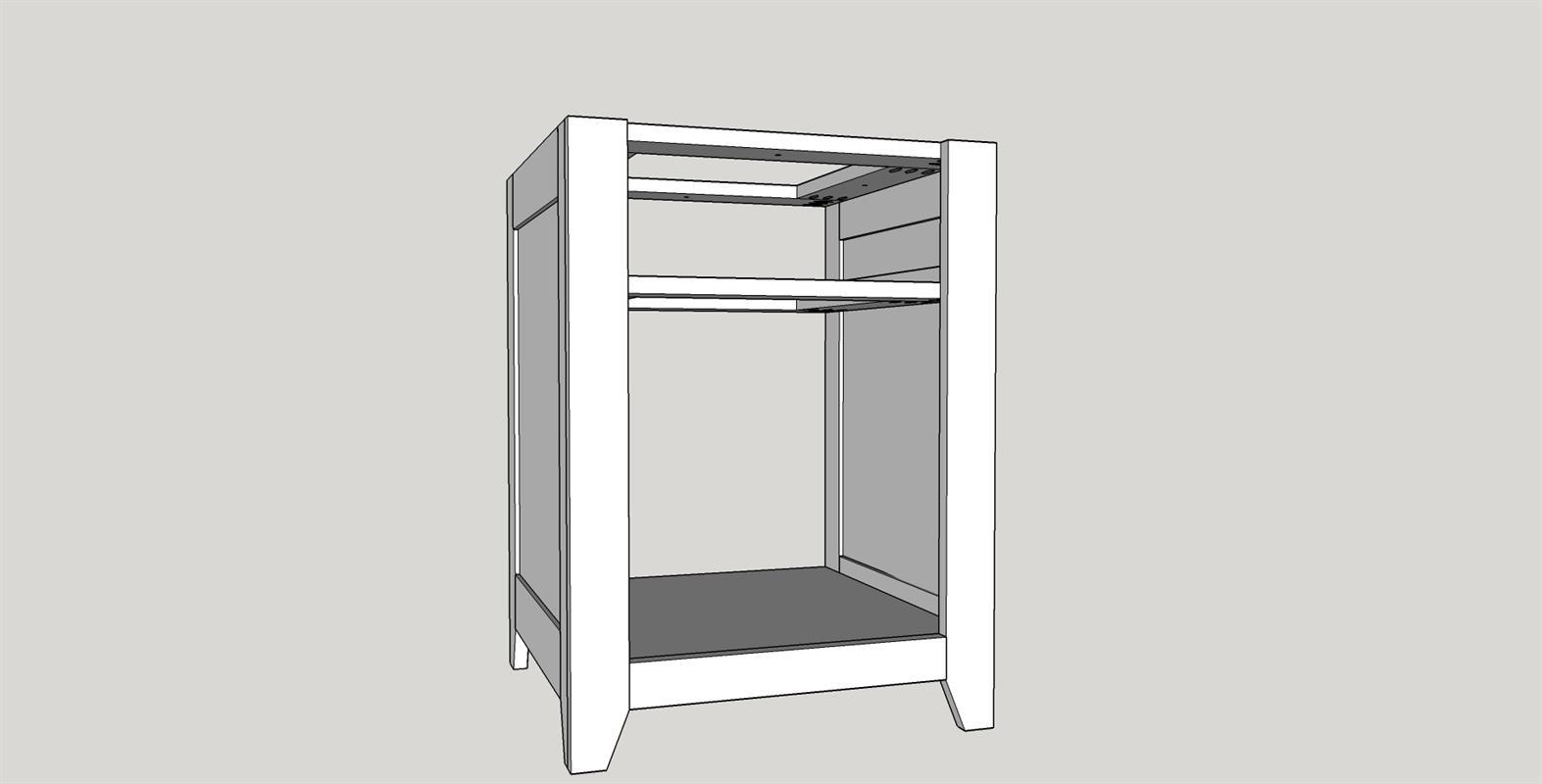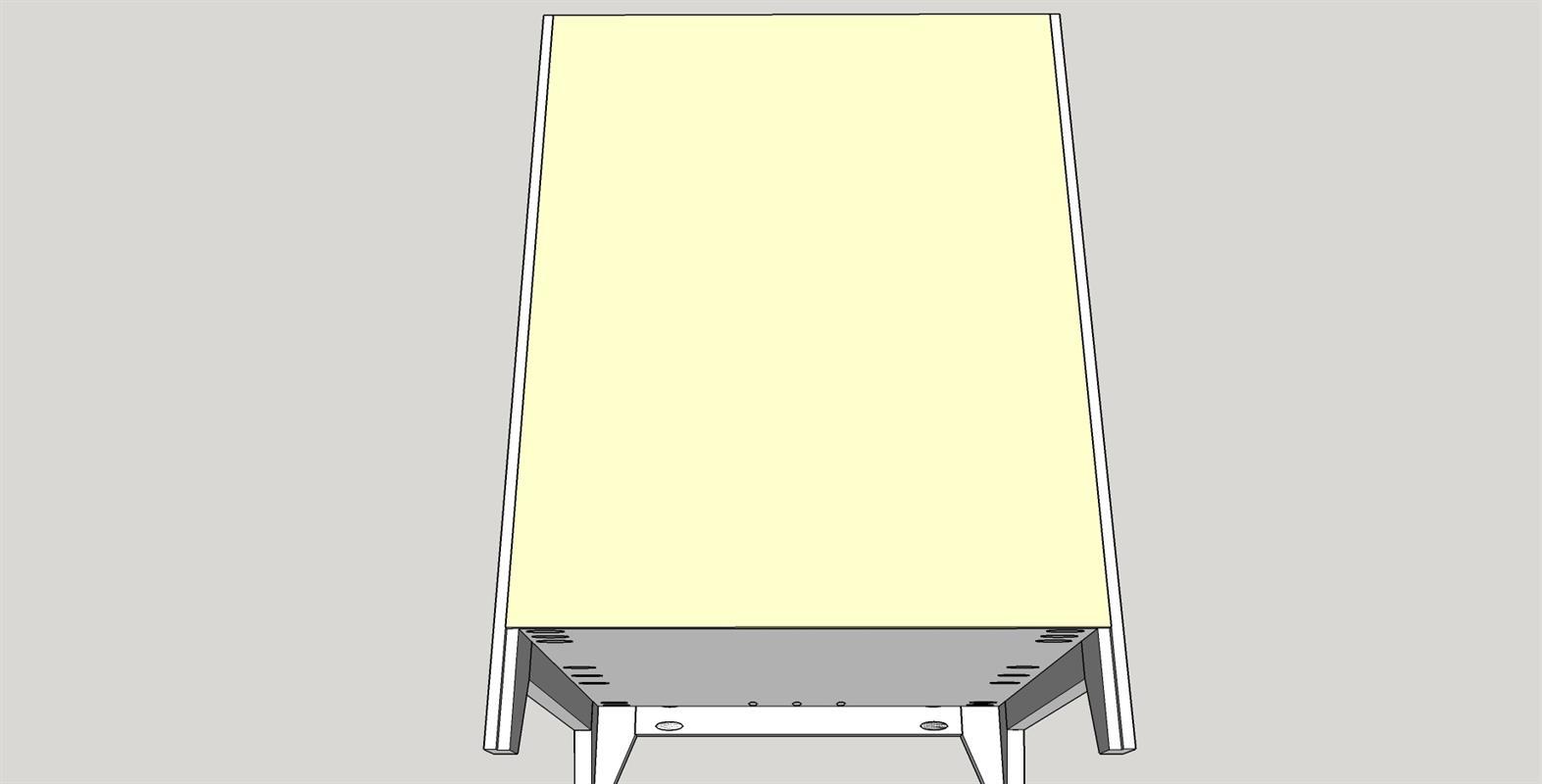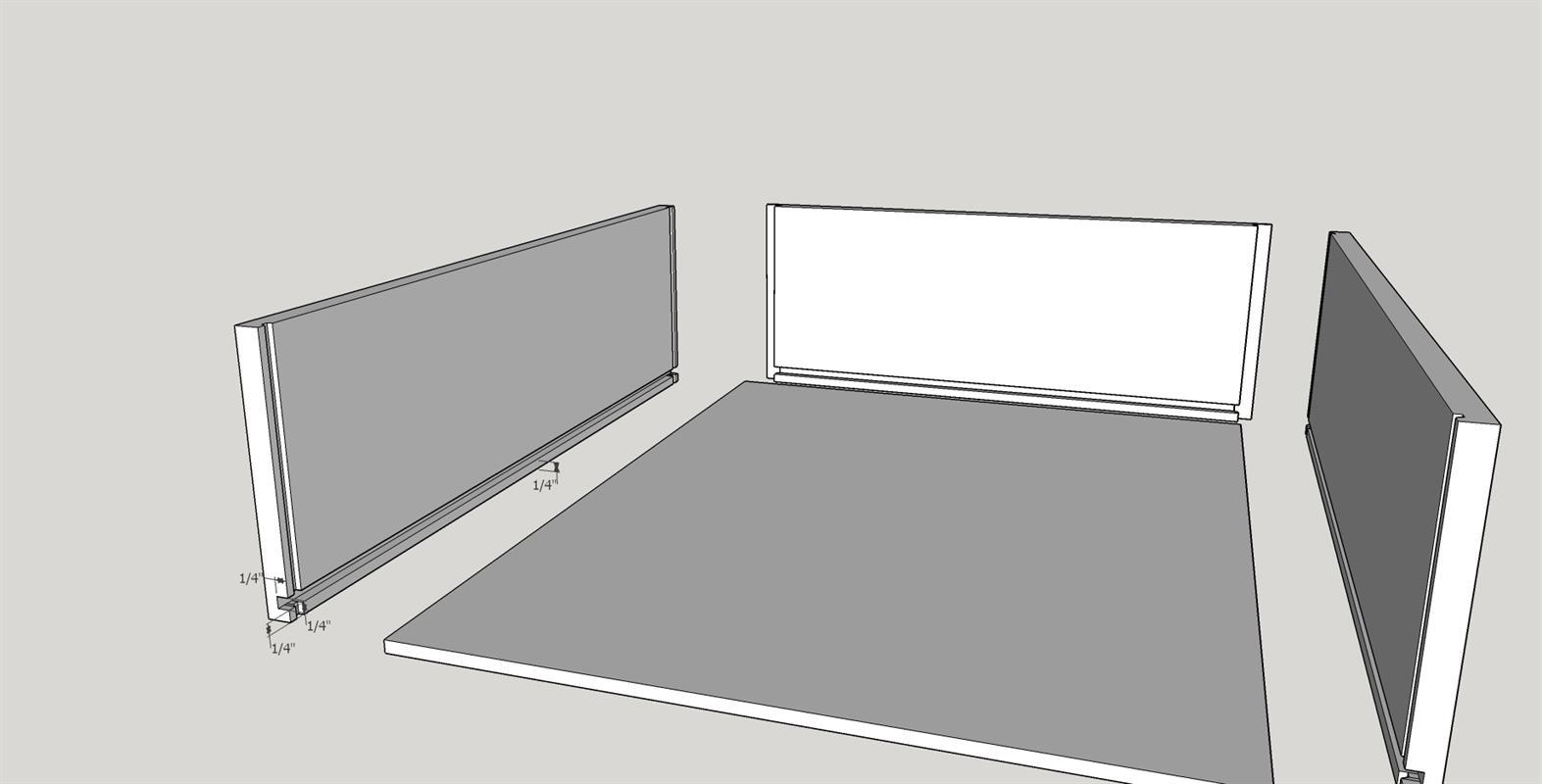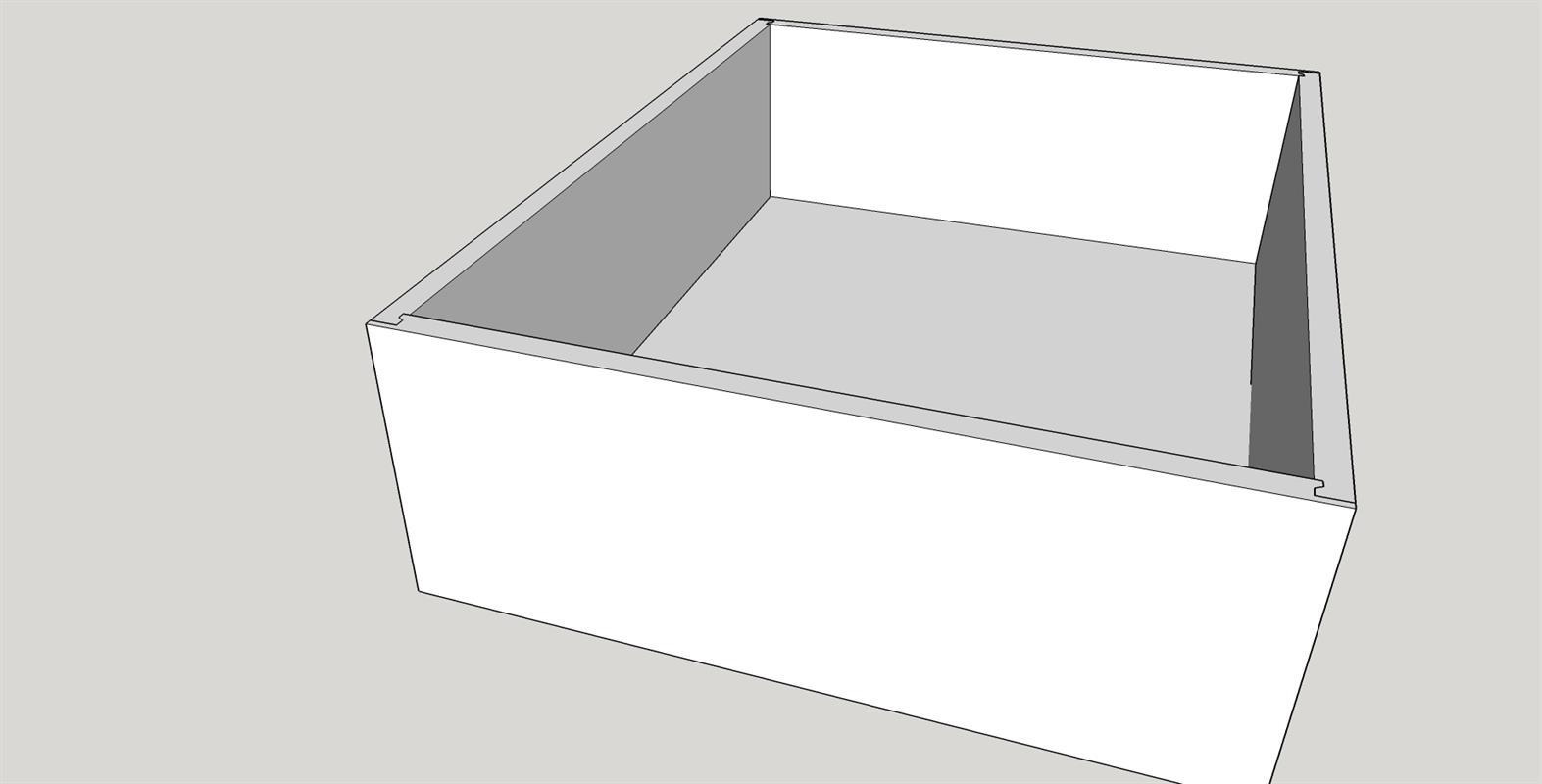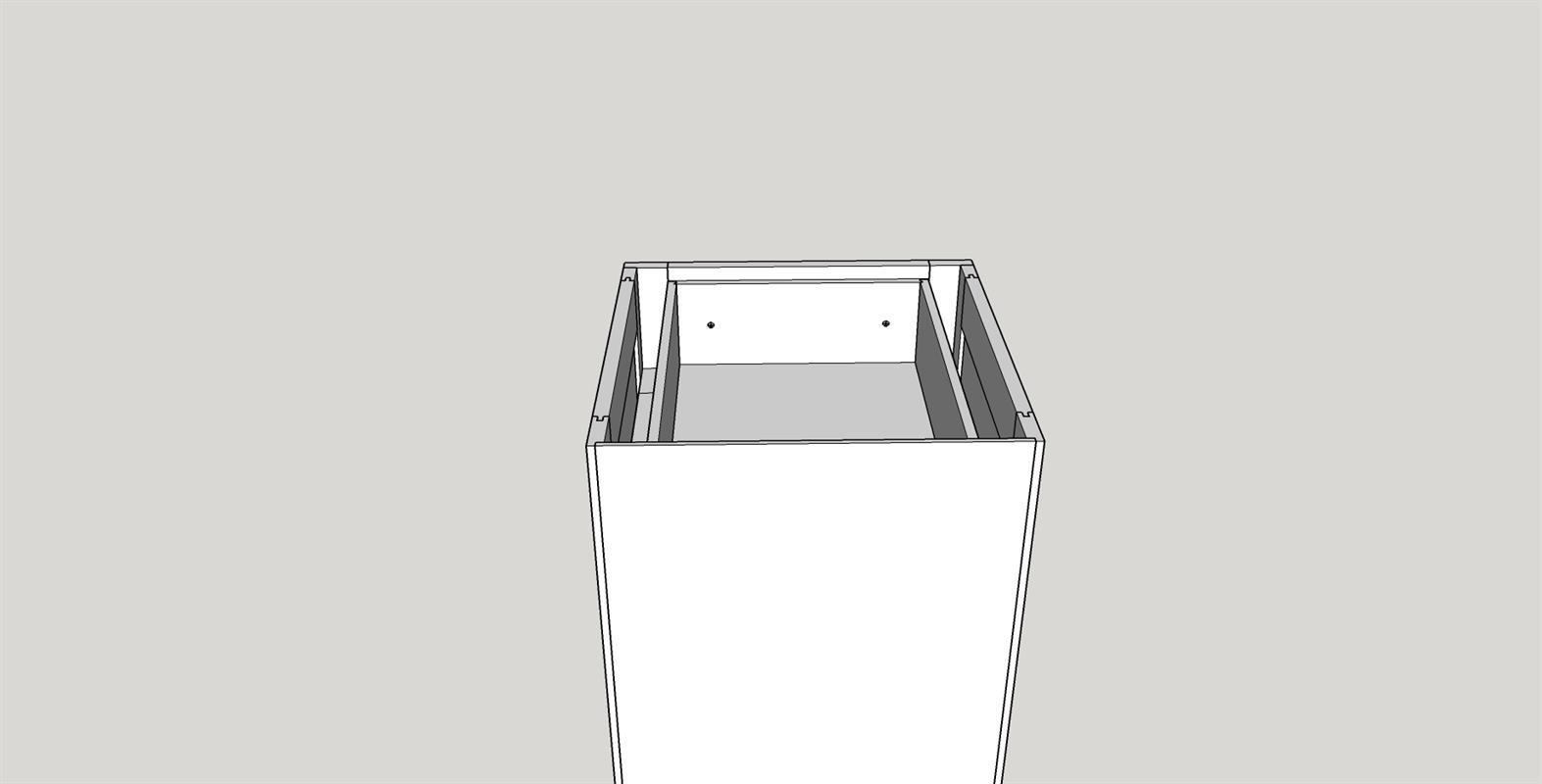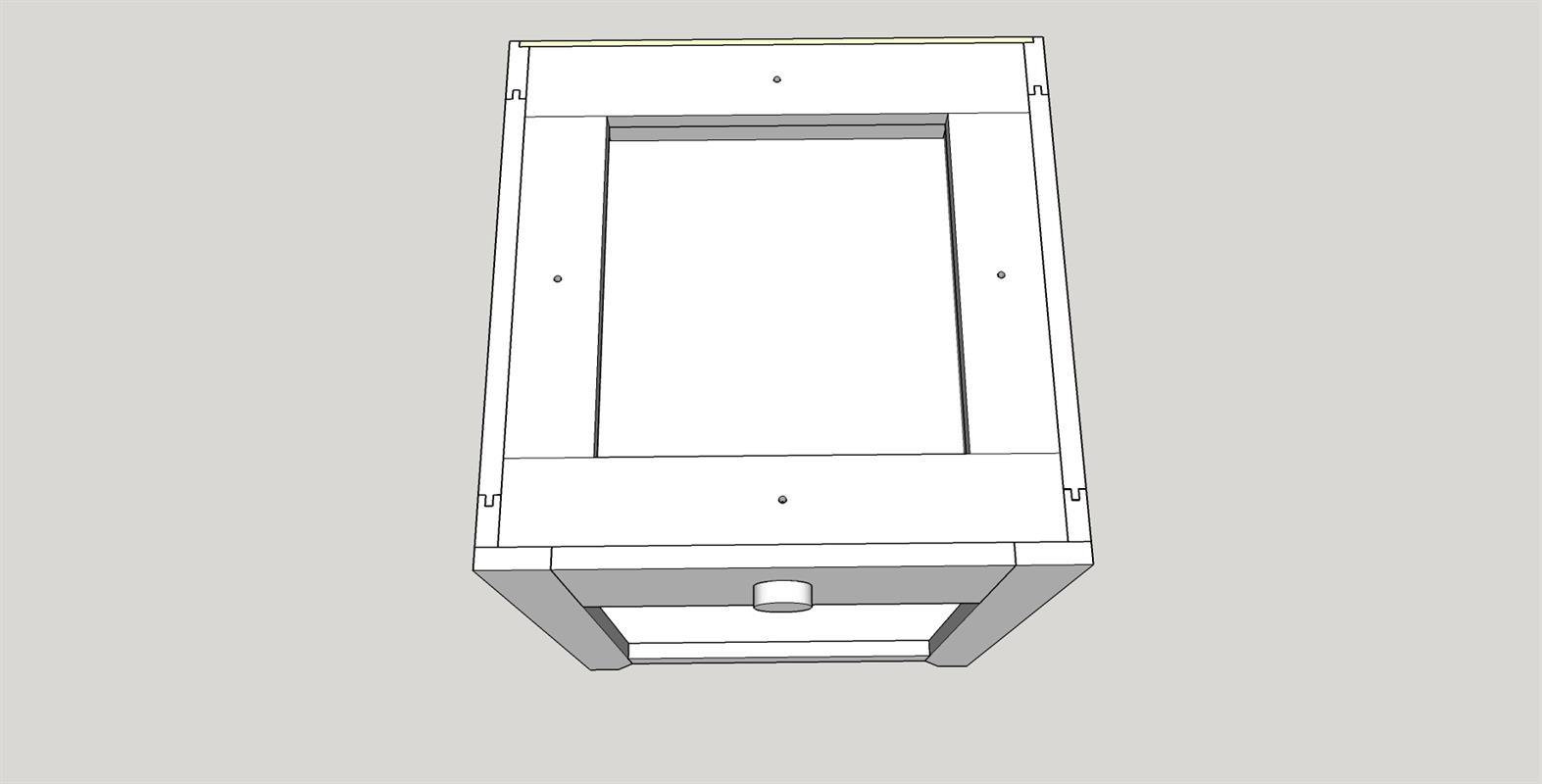Craftsman Style Nightstands
By fcbeckerCraftsman style Nightstands. Built with red oak, these Nightstands makes a beautiful addition to any bedroom. This simple yet elegant design will become a family heirloom.
Directions
-
Introduction
Please be sure to read through complete instructions before you begin any work on this project. Also keep in mind that plywood may be slightly thinner than its stated thickness. So some minor adjustments to plans may be required. Another good practice to use is, after the original carcass is assembled, cut to fit all additional pieces that are needed. While every effort was made to make the cut dimensions listed as accurate as possible, cutting to fit will adjust for any slight discrepancies in your assembly. This design makes one nightstand, you can double the cut list and make two. The height is also set at 28 1/4" to fit our bed height. You can adjust the height, to your needs, by modifying the length of the stiles, side panels and back.
-
Cut 3/4" Oak
Using the dimensions in the following diagram cut the pieces required for assembly. Please note that the top will require glueing up. Three pieces will be used for the top. It is a good idea to label the individual boards that will make up the top. You should also go through the boards and select the parts of the boards that best match color and grain for the glue up. When edge glued the top will make a board that is larger than the finished top. That is OK as we will eventually cut it to size. Use 100 - 150 grit sandpaper to smooth the part
-
Edge Glueing
For the top we will edge glue the boards labeled in step 2. If you are uncomfortable doing this I have attached one site with good information on the process. Please feel free to look at other sites. I normally use my Jet jointer to square and flatten the edges. Lay out the boards to provide the best looking grain. Use multiple clamps to bring the boards together. Make sure that the edges fit together well. Release the clamps and spread Titebond I wood glue along all of the edges to be joined. Avoid using excess glue. Realign the boards and clamp snugly. A picture of a typical clamp up follows.
-
Cut 1/4" Oak Plywood
Cut the nightstand side panels, back and drawer bottom from the 1/4" oak plywood sheet. Use 100 - 150 grit sandpaper to smooth the parts.
-
Cut 3/4" Oak Plywood
Cut the nightstand bottom from the 3/4" oak plywood sheet. Use 100 - 150 grit sandpaper to smooth the parts.
-
Cut 3/4" Poplar frame pieces
Cut the nightstand frame pieces from the 3/4" Poplar. Use 100 - 150 grit sandpaper to smooth the parts.
-
Cut 1/2" Poplar drawer box pieces
Cut the drawer box side, front and back pieces from the 1/2" poplar. Alternatively you can use 1/2" plywood. Keep in mind that plywood might be slightly thinner than its stated 1/2" thickness. If that is the case you will need to make slight adjustments to the measurements or the drawer may be a little too loose. Use 100 - 150 grit sandpaper to smooth the parts.
-
Assemble the two nightstand frames
Use a Kreg pocket hole Jig (set for 3/4") to drill all of the pocket holes for the frame assemblies. The attached diagram shows the approximate location of pocket holes in the frame assemblies. Once all pocket holes are drilled, assemble the two frames using wood glue and 1 1/4" Kreg coarse pocket screws. Check square and flatness.
-
Preparing the front assembly
Mark the leg cuts on the two front stiles. Using a band saw or jig saw cut the legs. Keep in mind that you will be cutting a left and right side...so keep the best looking side out on both. Use the Kreg Pocket Hole Jig to drill pocket holes in the inside ends of the front rail. Assemble the rail to the stiles as pictured using wood glue and 1 1/4" pocket screws.
-
Preparing the side stiles
Use a Freud (99-036) Adjustable Tongue and Groove Bit set mounted in a Kreg router table to cut grooves. The groove cutter bit is adjusted to cut 1/4" X 3/8" grooves in the center of the inside edges of the front and rear stiles. Alternatively the grooves can be cut on a table saw. Now mark the legs on the front and back side stiles. Using a band saw or jig saw cut the legs. To attach the 1/4" plywood back a 1/4" deep X 3/8" wide rabbit needs to be cut on the back inside edge of both rear side stiles. This can be done on a table saw by doing either several passes using a standard blade or single pass with a dado blade. Please be careful doing the rabbits as there is a left and right side and the rabbits should face inside.
-
Preparing the side rails
Use a Freud (99-036) Adjustable Tongue and Groove Bit set mounted in a Kreg router table to cut the tongues and grooves in the four rails. Use the groove cutter bit adjusted to cut 1/4" X 3/8" grooves in the center of the rails inside edges. Then use the tongue cutter bit adjusted to cut 1/4" X 3/8" tongues on both ends of the rails. Alternatively the grooves and tongues can be cut on a table saw.
-
Assembling the sides
Using a side rear stile, a side front stile, two side rails and a side panel - assemble a side. Use wood glue on the ends of the rails and along the edges of panels. Clean up any excess glue with a damp rag. Clamp snugly, check for square and readjust if needed. Repeat the process for the other side.
-
Drawer guides
Accurately measure and mark the drawer guide placement on the top of one of the frames (pocket holes are on the bottom side). The distance between the inside of the drawer guides should be 15". Using wood glue and 1 1/4" brad nails attach the two guides to the top of the lower frame. The guides should be square and parallel on the frame.
-
Prepare bottom
Use the Kreg Pocket Hole Jig to drill holes in the bottom.
-
Assemble frames, bottom and sides
Prepare for assembly by very accurately measuring and marking the distance of the upper edge of the frames from the bottom feet. The top frame should be flush with the top of the sides. I assemble on my table saw as it is flat and large enough to hold the nightstand. Place the front of the sides, the front of the bottom and the front of the frames down as they should be flush. (all pocket holes should face toward the feet) Line up each frame and the bottom with its marks and attach to the side with 1 1/4" Kreg fine pocket screws. I usually attach the frames and bottom to one side then repeat the process on the other side. Keep checking that the frames and bottom are square and parallel.
-
Add front assembly
Attach the front assembly with wood glue, 1 1/4" brad nails and 1 1/4" pocket screws. The stiles should be flush with the front side stiles and the tops of the sides.
-
Add back
Use wood glue along the back side rabbits and on the back edges of the frames and bottom. Lay the 1/4" plywood (good side out) in place. It should be flush with the bottom and the top and fit inside the rabbits. Use 1" pin nails to tack in place.
-
Preparing the drawer box
Using the 1/2" poplar drawer box set cut in step 7 and the 1/4" plywood drawer bottom cut in step 4 prepare the drawer assembly. Please note that my drawer sizes are approximate and will vary depending on how you construct the box corners. I use a Freud (99-240) Drawer lock bit on my Kreg router table to cut all of the corners. I then use my table saw to cut a 1/4" deep X 1/4 inch wide dado in the sides, front and back. This dado should be 1/4 inch up from the bottom of each board.
-
Assemble drawer box
Assemble the sides, back, front and bottom. Use wood glue at each corner joint and on the edges of the plywood bottom. You can either clamp until the drawers are dry or use 1" pin nails in each corner. Check for square and adjust if needed.
-
Fitting the drawer front
In the front of the drawer box drill 2 small pilot holes approx. 2 inches in from the edges and half way down from the top. Start two 1" flat headed self tapping wood screws on inside of the box. Place the drawer box into the nightstand with the two holes facing out. From the inside of the drawer box attach the drawer front to the front of the box with the two 1" screws. The drawer front should be flush with the bottom frame and equally spaced left to right. I use dimes as spacers.
-
Add the top
Cut the glued up top to final dimensions (22 X 21 1/2") The front and side edges of the top can be rounded over using a roundover bit and router or you can ease the edges with sandpaper...Your choice. Drill four 1/4" holes in the top frame. Place the top in position on the dresser with back flat edge flush with the back of the dresser and the top spaced evenly left to right (about 1"). From the underside of the top frame use four 1 1/4" Kreg fine pocket screws with washers to attach the top. The screws should be drawn snug but not over tight. This should hold the top in place but allow for any expansion or contraction of the top.
-
Finish
Now that the build is complete fill all nail holes and other imperfections with wood putty, let it dry. Then use 100 - 220 sandpaper to do a once over on all surfaces in preparation for the finish. Clean well to remove all dust. (I use compressed air and clean dry rags). To prevent any smell in the drawer box use 2 or 3 coats of a water based sealant like Minwax Polycrylic Satin finish on it. As we live in an adobe style house, I chose to use Weathered Oak Minwax Stain. After the stain was dry I used Minwax Tung Oil finish. I gave the nightstand three coats following manufacturers instructions. After the finish dries add the drawer pull.



